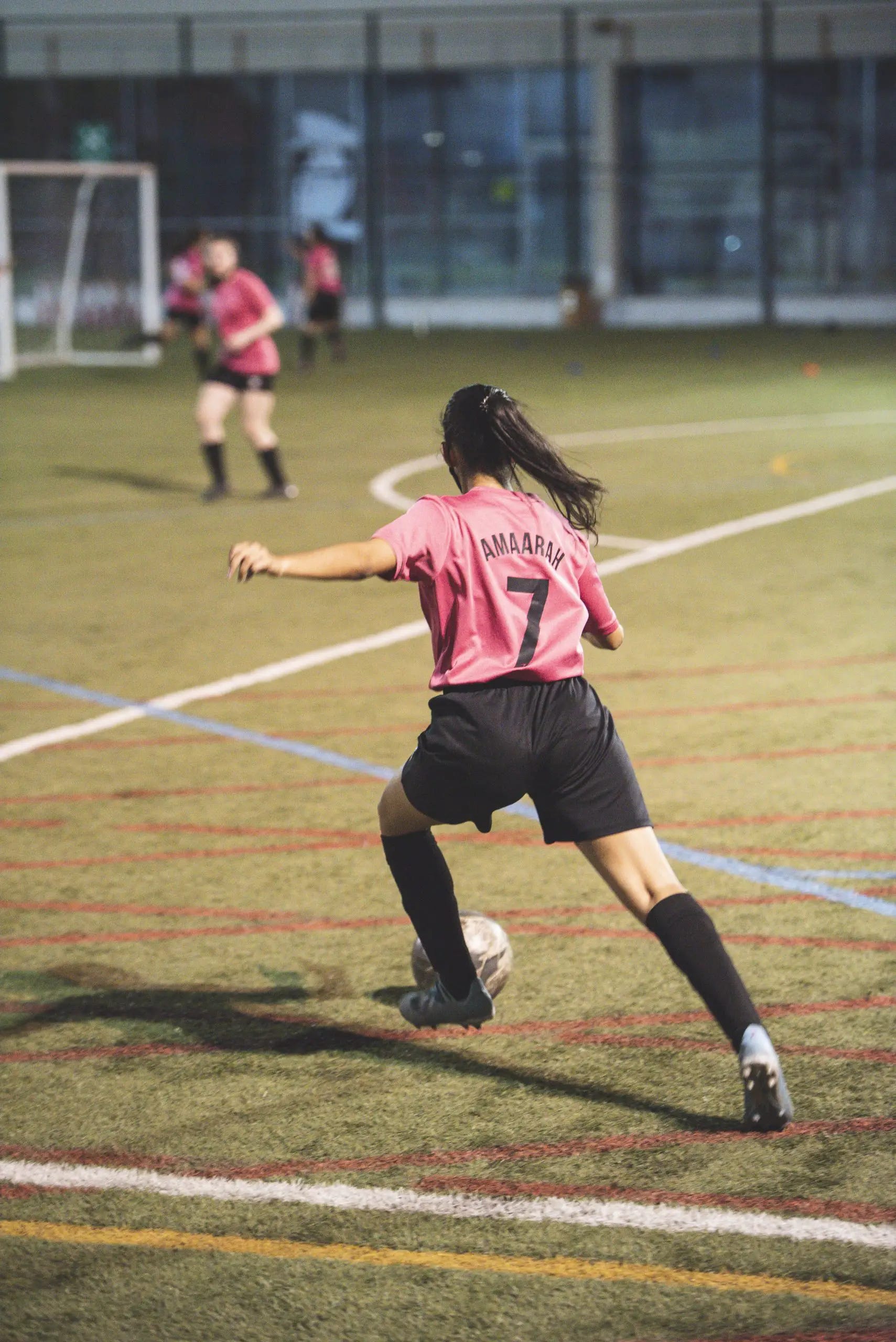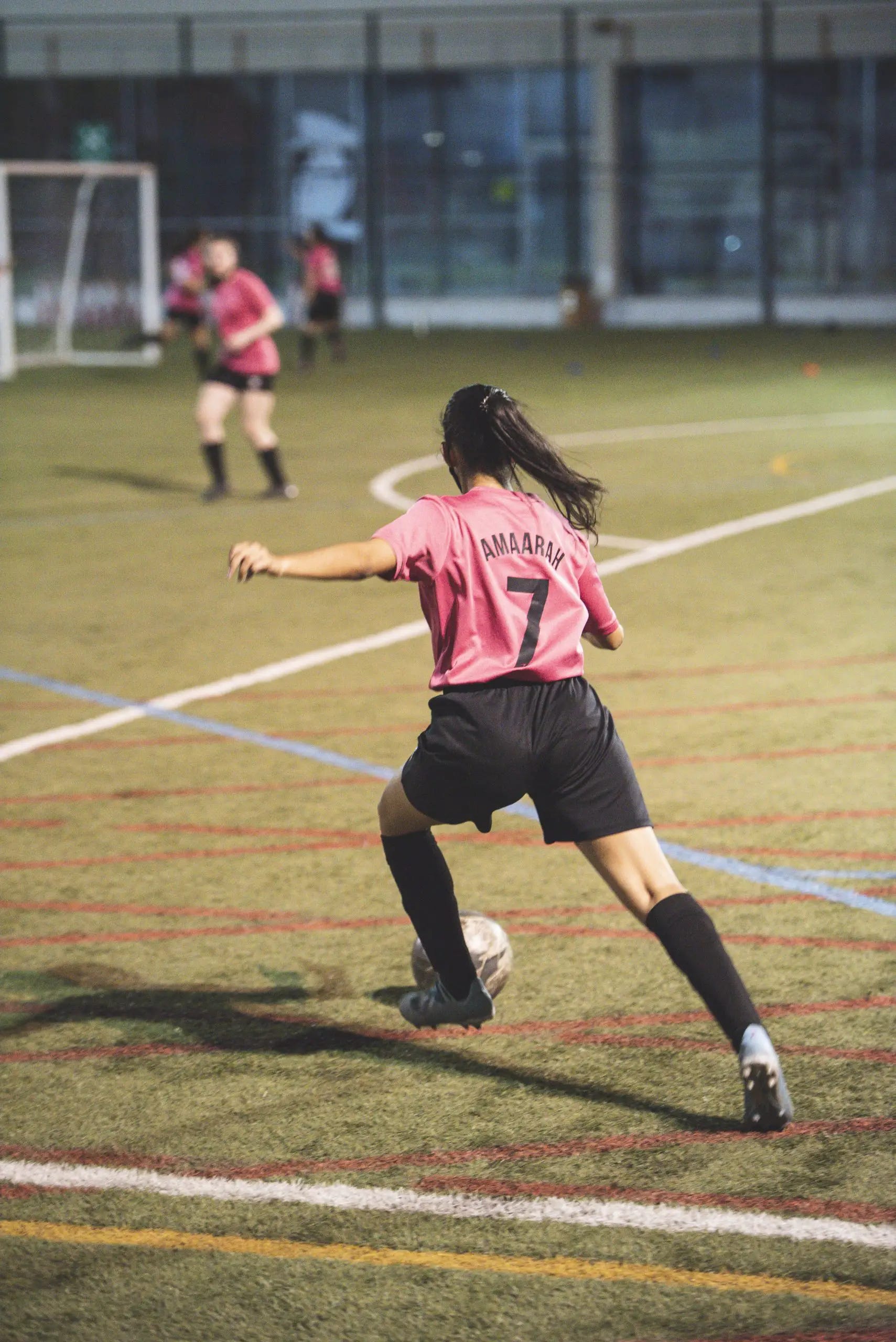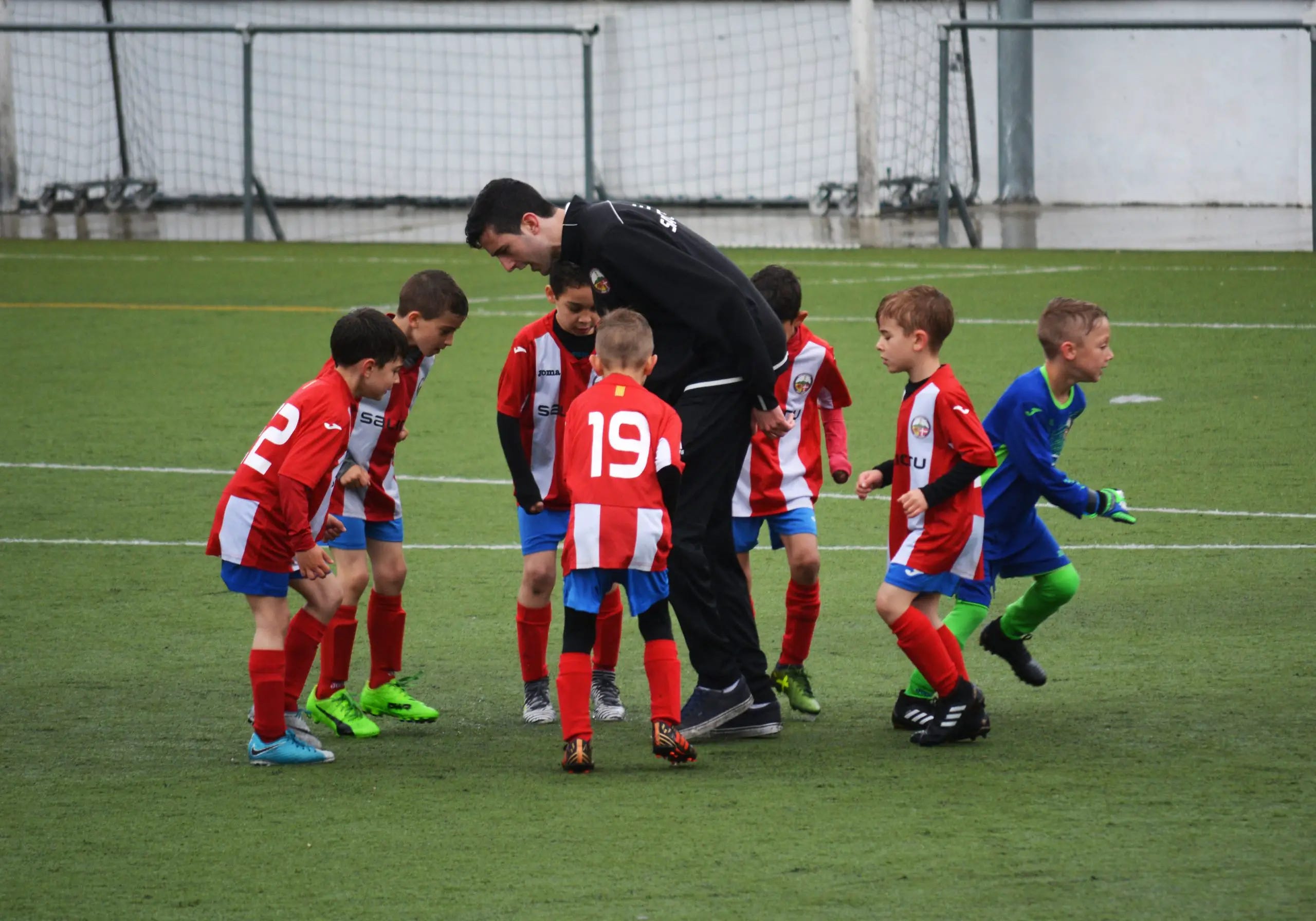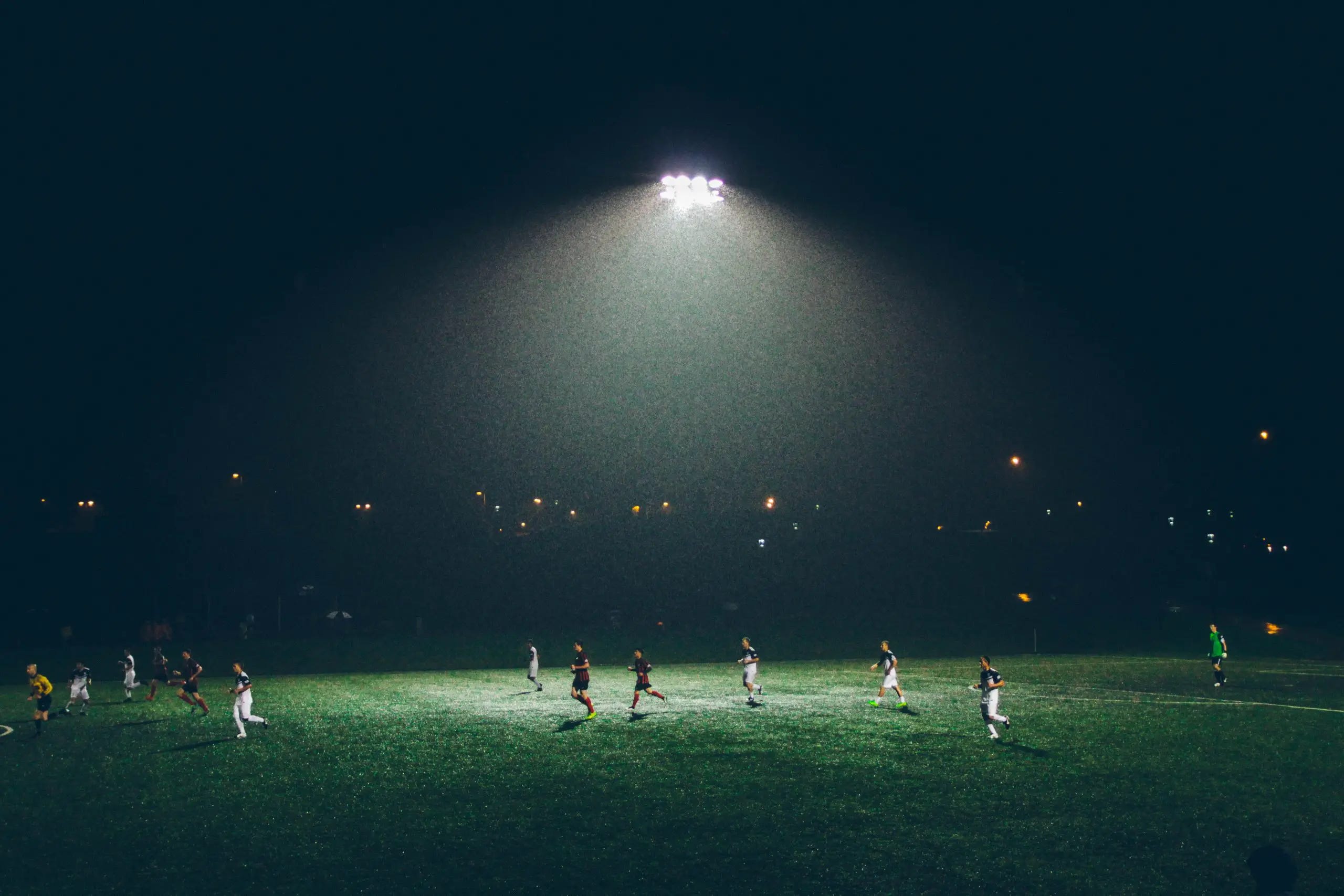Wing-Back Vs. Full-Back In Soccer: Key Differences Explained

In the world of soccer, there are countless positions that require different skills and tactics. Two such positions that often cause confusion are the Wing-Back and the Full-Back. While they may seem similar, there are key differences between these two roles that can greatly impact a game. In this article, we will explore these differences and shed light on the unique responsibilities and attributes that define a successful Wing-Back and Full-Back. So, if you’re a soccer enthusiast looking to expand your knowledge and understanding of the game, keep reading to discover the intricacies of these positions and how they can shape the outcome of a match.

Understanding the Positions: Wing-Back and Full-Back
Basics of the Wing-Back position
In soccer, the Wing-Back position is a crucial role that requires a unique set of skills and abilities. Essentially, a Wing-Back is a player who operates in the wide areas of the field, positioned between the defenders and the midfielders. This position is typically found in formations where the team deploys three center-backs or in systems that emphasize attacking from the flanks.
The primary role of a Wing-Back is to provide both defensive solidity and attacking prowess. Unlike traditional full-backs, Wing-Backs are expected to contribute significantly to the team’s offense by initiating attacks and providing width in the final third. They must have excellent stamina, as their role often requires them to cover a large portion of the pitch.
Basics of the Full-Back position
Full-Backs, on the other hand, are positioned closer to the central defenders and are responsible for providing defensive cover and support to the team. Their role focuses more on maintaining a stable back line and thwarting the opposition’s attacks. Full-Backs generally operate in formations that deploy four defenders and often have less attacking freedom compared to Wing-Backs.
While Full-Backs may not have the same attacking responsibilities as Wing-Backs, they still play an integral role in the team’s overall strategy. They are expected to possess strong defensive skills, such as marking opposition players and making crucial tackles. However, modern soccer demands versatility, and many Full-Backs also contribute to the team’s offensive play when the opportunity arises.
Key Role of Wing-Backs in Soccer
Why Wing-Backs are crucial in certain formations
Wing-Backs are crucial in formations that deploy three center-backs, such as the popular 3–5–2 or 3–4–3 setups. In these systems, the Wing-Backs act as the primary wide outlets for the team, ensuring that there is width in the attack. This positioning allows them to stretch the opposition’s defense and create gaps for their teammates to exploit. Additionally, Wing-Backs provide extra defensive cover when the team is under pressure, acting as auxiliary defenders when needed.
Specific tasks of a Wing-Back in a match
During a match, Wing-Backs have various tasks that contribute to the team’s overall performance. Their primary objective is to provide width in the attacking phase, which means they often make overlapping runs on the outside of the winger to create confusion among the opposition defenders. This offensive role also includes delivering accurate crosses into the box, offering scoring opportunities for their teammates.
Defensively, Wing-Backs are responsible for marking and tracking the opposition wingers, preventing them from creating dangerous attacking situations. They need to be agile, strong in one-on-one situations, and possess good positional awareness to effectively defend against skillful opposition players.
Best examples of Wing-Backs in professional soccer
There have been many exceptional Wing-Backs throughout the history of soccer. One prime example is Philipp Lahm, who excelled in this position for both Bayern Munich and the German national team. Lahm’s exceptional ability to contribute both offensively and defensively, coupled with his versatility and tactical understanding, made him one of the best Wing-Backs of his generation.
Another outstanding Wing-Back is Marcelo, who has achieved great success with Real Madrid. Known for his electrifying dribbling skills and offensive contributions, Marcelo has been a consistent threat from the left flank. His ability to combine attacking flair with defensive solidity has made him a key player in Real Madrid’s success.
Primary Responsibilities of Full-Backs
Defensive duties of a Full-Back
The primary responsibility of Full-Backs is to provide a strong defensive presence in the team. They must closely mark opposition players and prevent them from dribbling or crossing the ball into dangerous areas. Full-Backs need to be disciplined in their positioning and have the ability to anticipate and intercept passes intended for the opposition’s attackers. Their defensive role also includes covering for the center-backs when they move out of position.
The role of a Full-Back in the team’s offense
Although Full-Backs primarily focus on defensive duties, they also contribute to the team’s offensive play. When the opportunity arises, Full-Backs are expected to join the attack and provide overlapping runs or underlapping movements to create numerical advantages in wide areas. They can deliver crosses into the box or even take shots on goal themselves, adding an extra dimension to the team’s attacking options.
Famous Full-Backs and their style of play
There have been numerous famous Full-Backs who have left a significant impact on the game. One such player is Dani Alves, who has had a decorated career with clubs like Barcelona and Paris Saint-Germain. Known for his incredible attacking abilities, Alves has often been described as a modern-day full-back who seamlessly combines defensive solidity with exceptional offensive contributions. His ability to dictate play from the back and create chances for his teammates has set him apart from others in his position.
Another legendary Full-Back is Paolo Maldini, who spent his entire career at AC Milan. Maldini’s defensive brilliance and tactical intelligence made him one of the best defenders in the history of the game. He was known for his strong positioning, impeccable timing in tackles, and his ability to read the game. Maldini’s influence on the defensive side of the game made him a true stalwart for both club and country.
Understanding How Formations Impact Positions
Utilization of Wing-Backs in different formations
The utilization of Wing-Backs is heavily influenced by the team’s formation. As mentioned earlier, formations such as the 3–5–2 or 3–4–3 typically deploy Wing-Backs to provide width and attacking options in wide areas. These formations allow the team to overload the midfield and stretch the opposition’s defense, creating gaps for the attackers to exploit. Wing-Backs have the freedom to push forward and create numerical superiority in attacking scenarios.
When Full-Backs are preferred in a formation
Full-Backs are commonly preferred in formations that deploy four defenders, such as the 4–3–3 or 4–2–3–1. In these systems, Full-Backs play a more conservative role and focus primarily on defensive duties. Their positioning helps maintain a solid back line, limiting the opposition’s attacking options. With the wingers providing width in the attack, Full-Backs support the midfield and occasionally contribute to the offense when the opportunity arises.

Skill Sets Required for a Wing-Back
Essential physical skills
Being a successful Wing-Back requires a combination of physical attributes. Wing-Backs need to have excellent stamina and endurance to cover large distances throughout the match. Their explosive speed and acceleration allow them to make overlapping runs and recover defensively when needed. Additionally, their agility and balance are crucial for dribbling past opponents and maintaining control of the ball.
Tactical understanding and interpretation
Wing-Backs must possess a high level of tactical understanding and interpretation. They need to be able to read the game, anticipate the opposition’s moves, and make quick decisions on when to attack or defend. This includes knowing when to provide support for the wingers or central midfielders and when to hold their position to maintain defensive solidity. Tactical awareness is essential for Wing-Backs to excel in their role and contribute effectively to the team’s overall strategy.
Psychological attributes
Mental strength and resilience are vital traits for Wing-Backs to possess. They often find themselves in demanding situations, both physically and mentally, as they constantly switch between offensive and defensive responsibilities. Wing-Backs need to remain focused and composed, especially when facing skilled opposition players or when the team is under pressure. Additionally, they must have the drive and determination to constantly improve and adapt to different game situations.
Crucial Abilities for a Full-Back
Key physical attributes
Similar to Wing-Backs, Full-Backs require certain physical attributes to excel in their role. They need to have good speed to keep up with the opposition’s attackers and recover defensively if necessary. Agile footwork is crucial for making quick changes in direction while marking opponents or intercepting passes. Full-Backs should also possess strength and power to win aerial battles and hold their ground against physically imposing opponents.
Understanding of game tactics
Full-Backs need to have a deep understanding of the team’s defensive tactics and systems. They must be able to analyze and react to the opposition’s attacking patterns, ensuring they are in the right position to make interceptions or tackles. Awareness of when to step up and apply pressure, drop deep to cover central defenders, or provide support to the midfield is crucial for Full-Backs to fulfill their defensive responsibilities effectively.
Required mental strength and focus
Full-Backs must have strong mental attributes to succeed in their role. They need to remain alert and focused throughout the game, as they are responsible for tracking and marking opposition wingers. The ability to maintain concentration for extended periods of time is essential to prevent defensive lapses or being caught out of position. Additionally, Full-Backs must possess the mental resilience to bounce back from mistakes and continue performing at a high level.

How Wing-Backs Contribute to Offenses
Overlapping runs and crossing
One of the key ways Wing-Backs contribute to a team’s offense is through overlapping runs. By making well-timed runs on the outside of the winger, they create confusion among the opposition defenders and provide an extra attacking option. Wing-Backs aim to stretch the defense and create space for themselves or their teammates to exploit. Once in an advanced position, Wing-Backs can deliver accurate crosses into the box, providing goalscoring opportunities for the attackers.
Wide play and stretching the opposition
Wing-Backs play a crucial role in widening the team’s attacking play. By hugging the touchline, they create space in the central areas for the attackers to exploit. This width also stretches the opposition’s defense, forcing them to cover a larger area and potentially leaving gaps for the attackers to exploit. The ability of Wing-Backs to stretch the opposition’s defense opens up multiple passing options for their teammates and allows for more intricate build-up play.
Dynamic interplay with wingers and midfielders
The interplay between Wing-Backs, wingers, and central midfielders is essential for effective offensive play. Wing-Backs often combine with wingers to create overlapping movements, enabling quick one-two passes or incisive through balls. This dynamic interplay creates numerical advantages on the flanks and disorganizes the opposition’s defense. Additionally, Wing-Backs provide passing options for the central midfielders, helping to circulate the ball and maintain possession.
Defensive Expectations from Full-Backs
Maintaining a stable back line
One of the primary defensive responsibilities of Full-Backs is to maintain a stable back line. They need to communicate effectively with the center-backs to ensure there are no gaps or spaces for the opposition to exploit. Full-Backs must have good positional awareness and be able to adjust their positioning based on the movements of the opposition’s attackers. By maintaining a disciplined defensive line, Full-Backs contribute to the team’s overall defensive solidity.
Marking opposition wingers
Full-Backs are often tasked with marking the opposition wingers, preventing them from making dangerous runs or receiving the ball in dangerous positions. This requires excellent man-marking skills and the ability to read the game to anticipate the movements of the winger. Full-Backs must stay close to their assigned opposition player, not allowing them to receive the ball or make penetrating runs behind the defense. Effective marking from Full-Backs limits the attacking opportunities for the opposition.
Providing cover for center backs
Full-Backs are the last line of defense on the flanks and play a crucial role in providing cover for the center-backs. When the opposition’s attackers drift wide or make deep runs into the channels, Full-Backs are responsible for tracking their movements and preventing them from entering dangerous areas. By providing cover and support to the center-backs, Full-Backs help maintain defensive stability and ensure the team remains organized in the face of opposition attacks.
Training and Development for Wing-Backs
Specific training exercises for Wing-Backs
To develop the necessary skills and attributes, Wing-Backs can engage in specific training exercises. Endurance training, such as long-distance running or interval training, helps build the necessary stamina for the position. Speed and agility drills improve explosiveness and change of direction, allowing Wing-Backs to make quick bursts or recover defensively.
Additionally, technical training focused on crossing, dribbling, and passing is crucial for Wing-Backs to excel in their offensive contributions. Defensive drills that simulate one-on-one situations or positional awareness exercises help improve their defensive skills and decision-making. Working closely with coaches and participating in game simulations are also beneficial in developing the tactical understanding required of a Wing-Back.
How to improve as a Wing-Back
To improve as a Wing-Back, it is crucial to analyze and learn from both individual performances and the performances of successful professionals in the position. Identifying strengths and weaknesses can guide specific areas of improvement, such as refining crossing techniques or enhancing defensive positioning.
Regularly practicing crossing and passing accuracy, both with teammates and in independent training sessions, helps develop the necessary technical skills. Studying and understanding different game situations through video analysis can aid in tactical development. Seeking feedback from coaches and teammates and actively working on the areas that need improvement is vital for personal growth as a Wing-Back.
Learning from the best: Tips from professional Wing-Backs
Professional Wing-Backs often share valuable insights that aspiring players can apply to their own development. Many stress the importance of watching and learning from the best players in the position, as this can provide inspiration and guidance. Building a strong physical foundation through conditioning and fitness training is essential for meeting the demands of the Wing-Back role.
Furthermore, professionals emphasize the need to be adaptable and versatile. Being comfortable playing in various formations and understanding different game scenarios enables Wing-Backs to thrive in different tactical setups. Finally, maintaining a positive mindset, working hard in training, and being open to continuous learning are essential for long-term success as a Wing-Back.
Working Together: Interactions between Wing-Backs and Full-Backs
How Wing-Backs and Full-Backs operate in tandem
Wing-Backs and Full-Backs often work in synchrony to ensure the team functions effectively both defensively and offensively. In formations with three center-backs, the Wing-Backs are responsible for providing attacking width, while Full-Backs provide more defensive cover. As Wing-Backs push forward, Full-Backs drop deeper to maintain a solid defensive line. This coordinated movement and understanding between the two positions help create a balanced approach in both phases of the game.
Understanding necessary communication and teamwork
Effective communication and teamwork between Wing-Backs and Full-Backs are essential for a cohesive defensive unit. They need to constantly exchange information on the positioning of the opposition players and ensure they are marking the correct players. Effective communication allows for smooth transitions during defensive transitions and prevents defensive breakdowns.
Offensively, Wing-Backs and Full-Backs need to understand each other’s movements and positioning. Wing-Backs often provide passing options for Full-Backs when the team is building from the back. The two positions need to work together to create passing triangles and provide support for each other when initiating attacks down the flanks.
Mutual impact on team defense and offense
The performances of both Wing-Backs and Full-Backs have a significant impact on the team’s overall defense and offense. When Wing-Backs effectively push forward and contribute to the attack, the opposition’s defenders are forced to track them, creating space for the central attackers or midfielders. This offensive impact relieves pressure on the team’s defensive unit and provides an additional attacking outlet.
Similarly, Full-Backs play a crucial role in maintaining a solid defensive foundation. By closely marking opposition wingers and providing cover for center-backs, Full-Backs limit the attacking options of the opposition. This defensive stability allows the team to maintain control of the game and reduces the risk of conceding goals. The collective efforts of Wing-Backs and Full-Backs have a direct impact on the team’s success in both offensive and defensive phases of the game.
In conclusion, understanding the roles of Wing-Backs and Full-Backs in soccer is crucial for comprehending the nuances and tactical intricacies of the game. Both positions play distinct roles within the team and require a unique set of skills and attributes. Whether it’s the attacking flair of the Wing-Backs or the defensive solidity of the Full-Backs, these positions are integral to the team’s success. By recognizing and appreciating the differences and similarities between the two positions, one can develop a deeper understanding and appreciation for the beautiful game of soccer.
